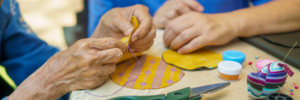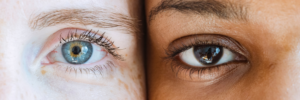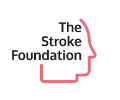What is neuroplasticity and what role does it play in stroke recovery?
The brain is an extremely complex part of the body, made up of billions of cells, called neurons. A stroke, however, can cause damage to neurons and their pathways, which causes impairments and deficits in functions of the brain. Fortunately, the brain has its own method of recovering from injury called neuroplasticity. Neuroplasticity, also known as brain plasticity, is how the brain and the rest of the central nervous system is able to generate new neurons and neural pathways, and change the structure of the cells in response to its changing environment. This is how the brain compensates for and recovers damaged cells after a stroke.
Neuroplasticity is a constantly occurring process, and it happens throughout the entirety of peoples’ lives, spurring into further action after brain injury. However, the degree of this spontaneous change is limited so additional stimulation is needed to spark greater and accurate progress.
What are the methods to promote neuroplasticity for rehabilitation?
Neuroplasticity in rehabilitation is driven by lifestyle factors and a variety of experiences. Research shows the following ways can positively promote neuroplasticity during rehabilitation:
- Physical therapy, such as:
- Constraint induced movement therapy (CIMT) for the arm and hand
- Task-oriented physical therapy
- Locomotion rehabilitation (walking)
- Aerobic exercise
- Neurostimulation techniques, both invasive and non-invasive electrical stimulation
- Cognitive training, such as video games
- Learning
- Generation and repetition of novel movements
- Sensory and motor experiences (read more here)
Because neuroplasticity is experience-dependent, an enriched environment with sensory, motor, and cognitive stimulation is key to recovery, as such stimuli will elicit various modifications in the brain.
What are some things to remember when training for neuroplasticity?
Use it, improve it, otherwise lose it.
Use it and improve it: training a certain function will enhance the function. Use it or lose it: not using certain functions of the brain can lead to degradation of those functions (read more here).
The earlier the better.
The brain temporarily increases neural generation and reorganization in response to injury, which is why starting rehabilitation earlier, during the natural course, is more effective than later (read more here) .
The quality of training—specificity, repetition, intensity, novelty—matters.
For the plastic changes to create a significant and lasting change, training needs to be relevant and specific to the functions that are being improved. For example, locomotion and balance training develops cognition and the sensorimotor cortex, the part of the brain responsible for body movements. In comparison, an increase in social experiences will develop the frontal cortex, the part of the brain responsible for various complex cognitive functions, such as decision making, personality expression and emotions.
Furthermore, while repetition may be important in re-obtaining skills, greater neuroplasticity is produced by intensity. Intensity may look like:
- Walking at a faster pace than the usual
- Longer duration of a session
- More repetitions in a shorter time
Finally, the greatest neuroplastic changes have been shown to occur when novel movements are generated and repeated, instead of repeating known movements (read more here).
Training has to be specific to a cause, and repeated while being appropriately intense and sufficiently difficult to maintain the appropriate challenge for achieving the greatest results.
Transference and interference
Practicing and acquiring a skill can allow other related skills to be acquired more easily.
Conversely, experiences can interact with other experience-dependent changes. For example, stress has the ability to block the normal recovery process. Having bad habits or utilizing a shortcut can make relearning a skill the proper way more difficult.
Personalization
Brain injuries are complex like neuroplasticity, resulting from a cascade of cellular events that differ by person. This means that the seemingly same impairment, such as aphasia, may be caused by different damages of the brain. Consequently, a specific training regimen for the same impairment, may produce different results. And regardless of these unique damages of the brain, the same training often generates changes that differ by the individual. Essentially, training that works for one person might not work for another (read more here) .
In short…
Through a person’s environment and experiences, brains have the power of organizing the cellular networks of the brain, and facilitating the remodeling of these networks, especially after traumatic damage. In order to gain the most effective neuroplastic modifications, it is important to remember to start the recovery process early, emphasize quality during training, and personalization to regain as much function and mobility as possible.
Though we have garnered a basic understanding of the aforementioned principles of neuroplasticity, the field is still fairly new. There is much more research needed on the mechanism of neuroplasticity and how it can be better utilized for rehabilitation and recovery.
All change takes effort and time—continuous effort every day will make a difference!




